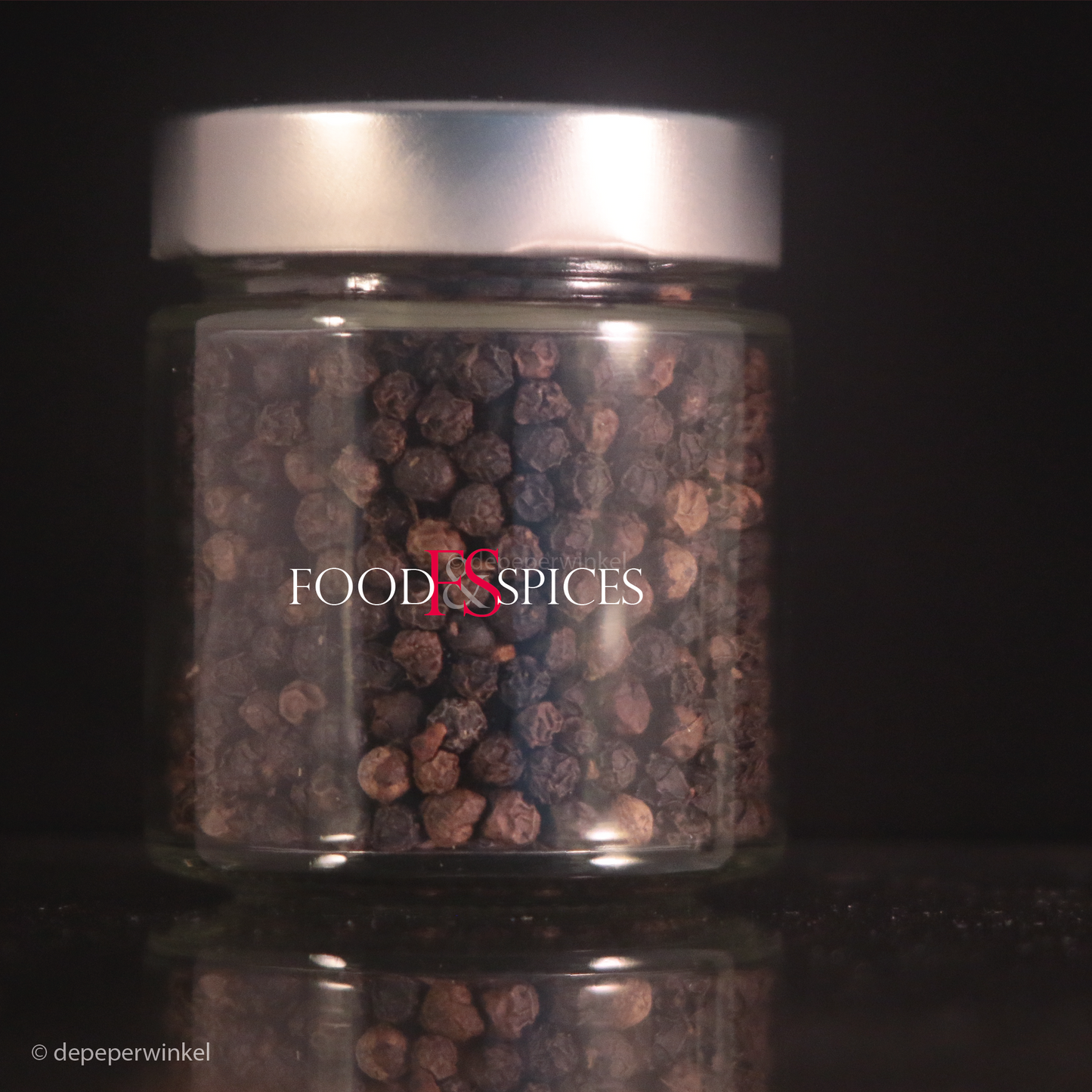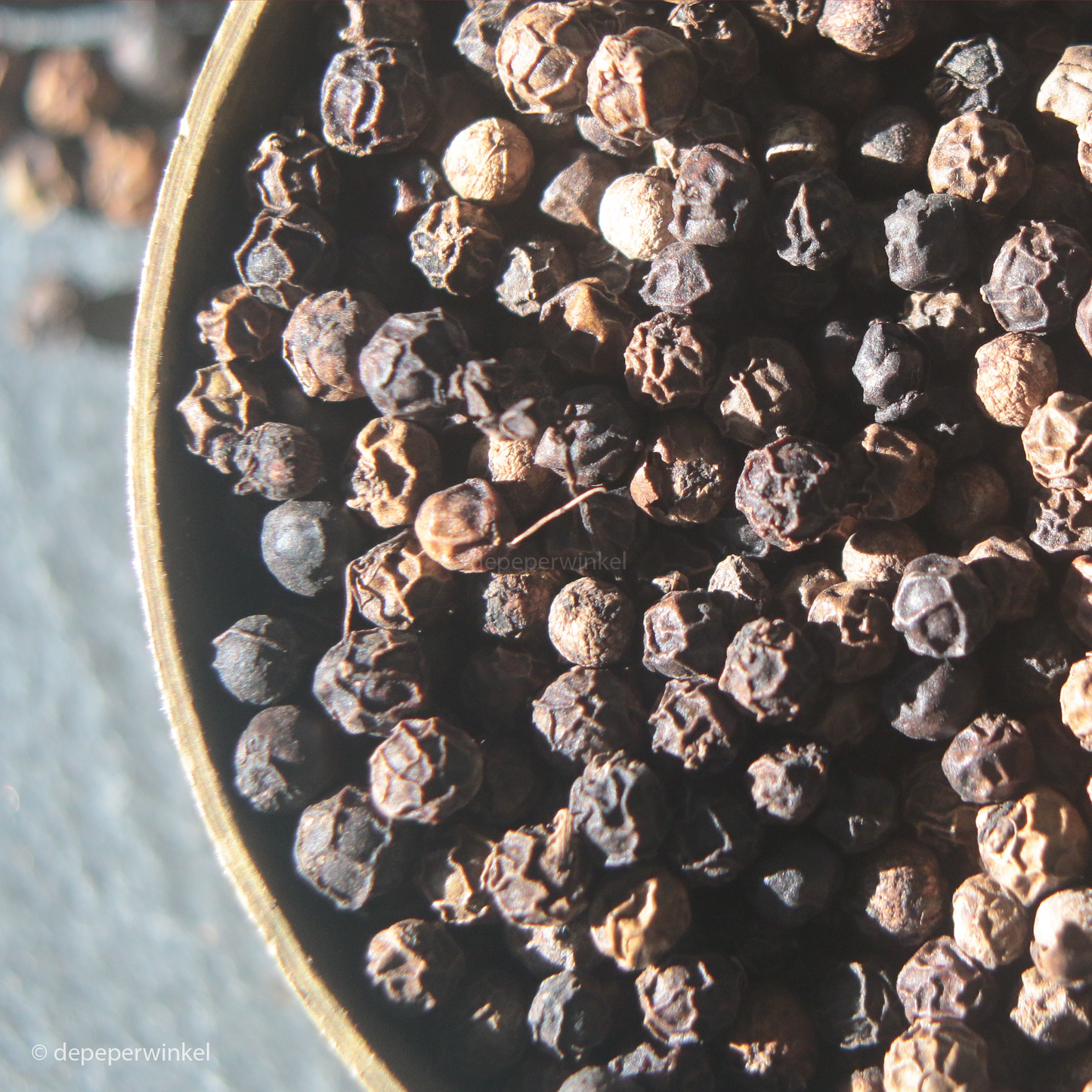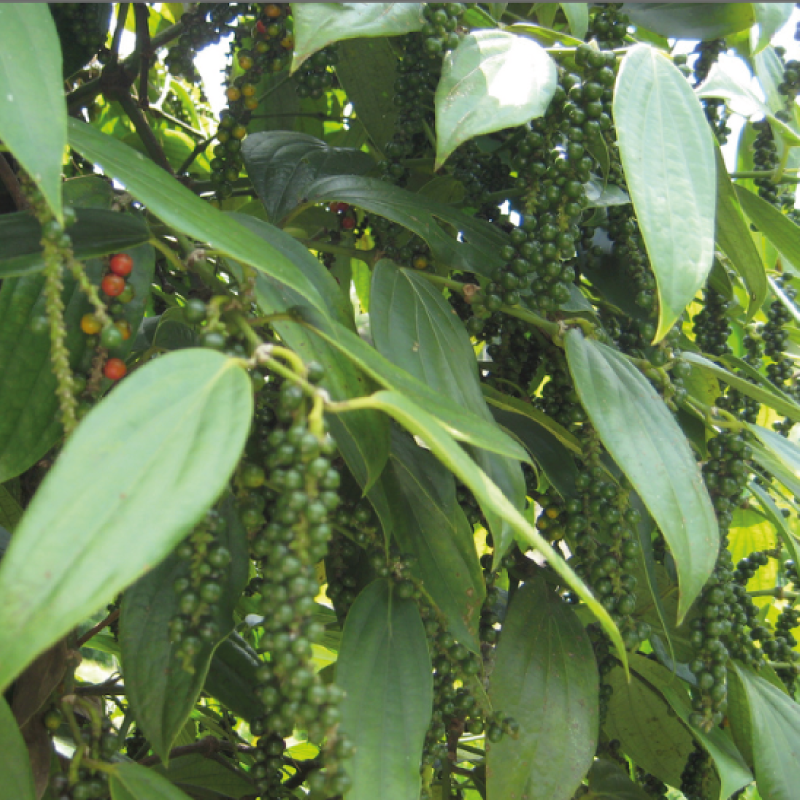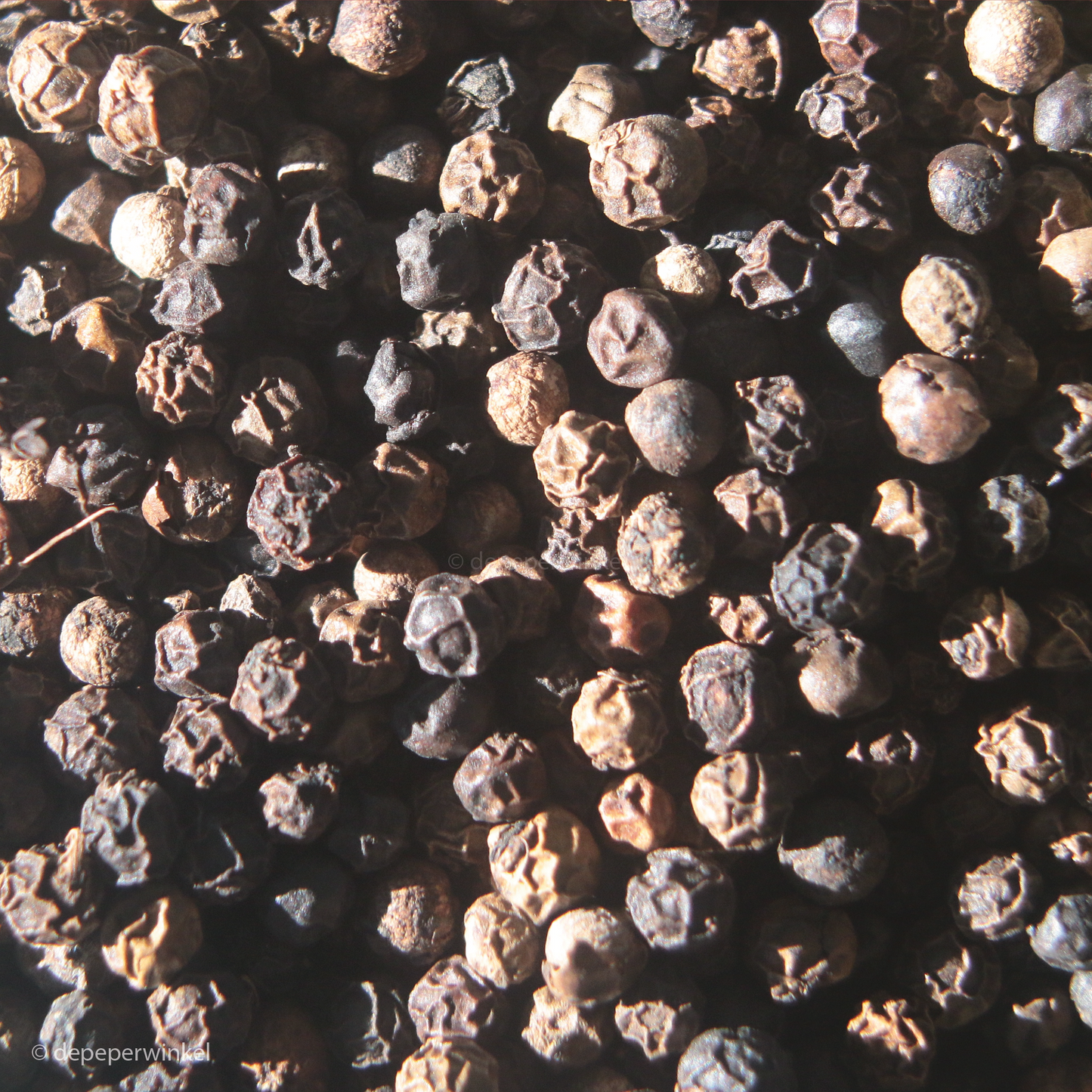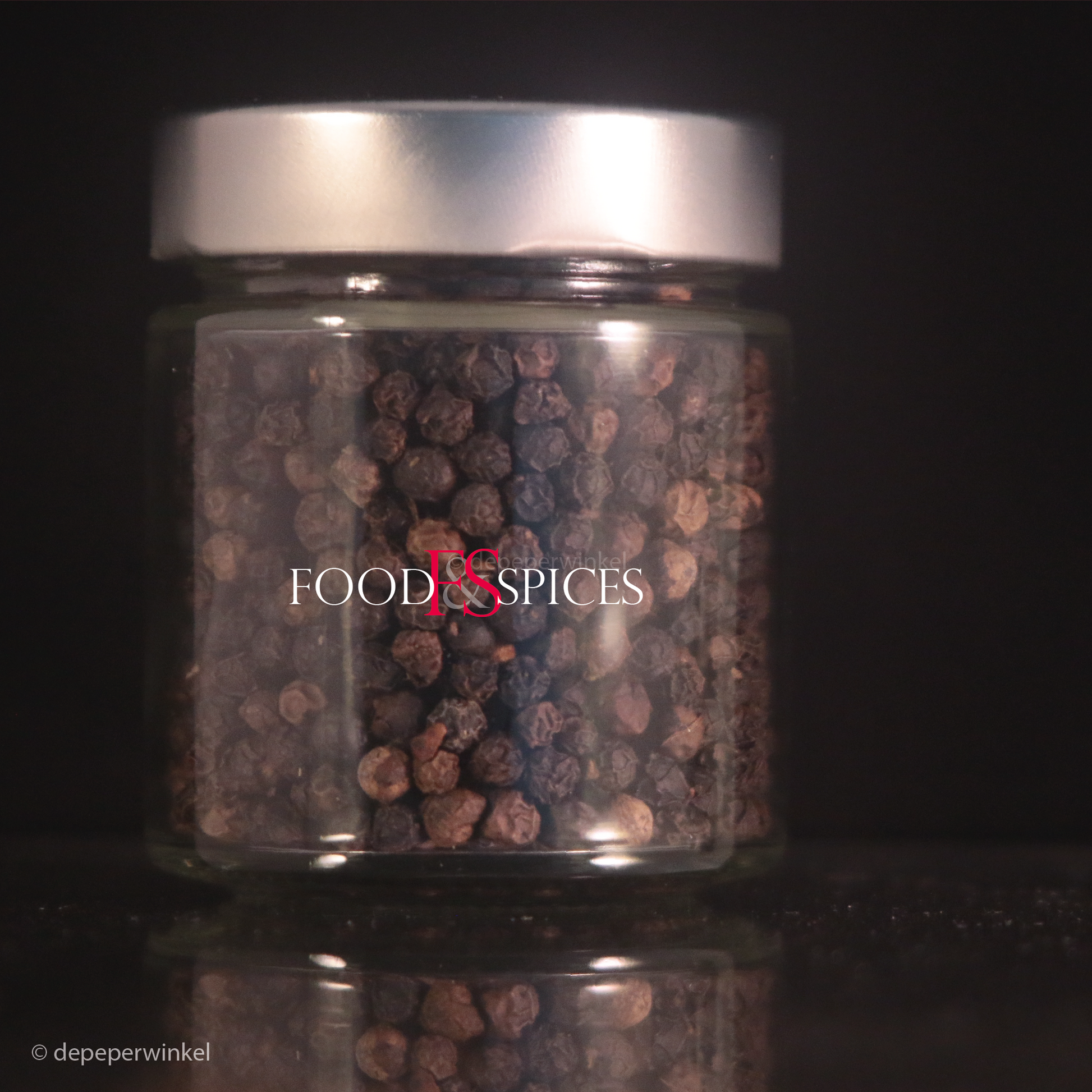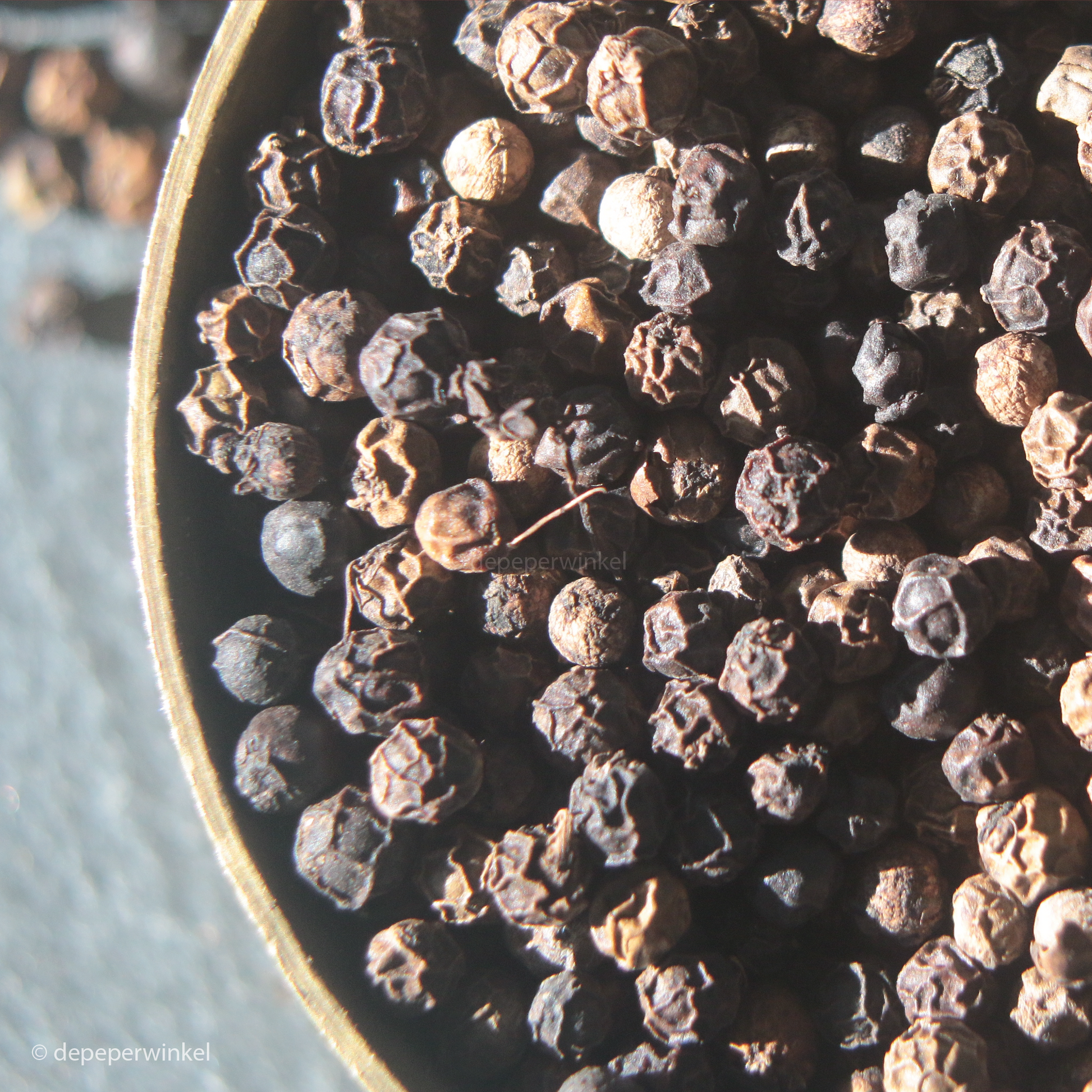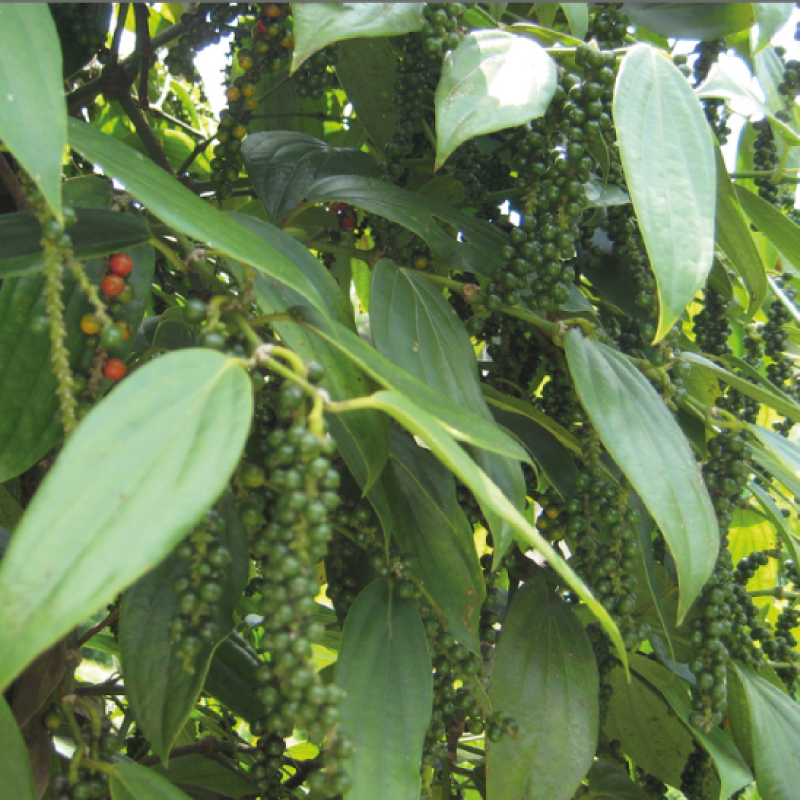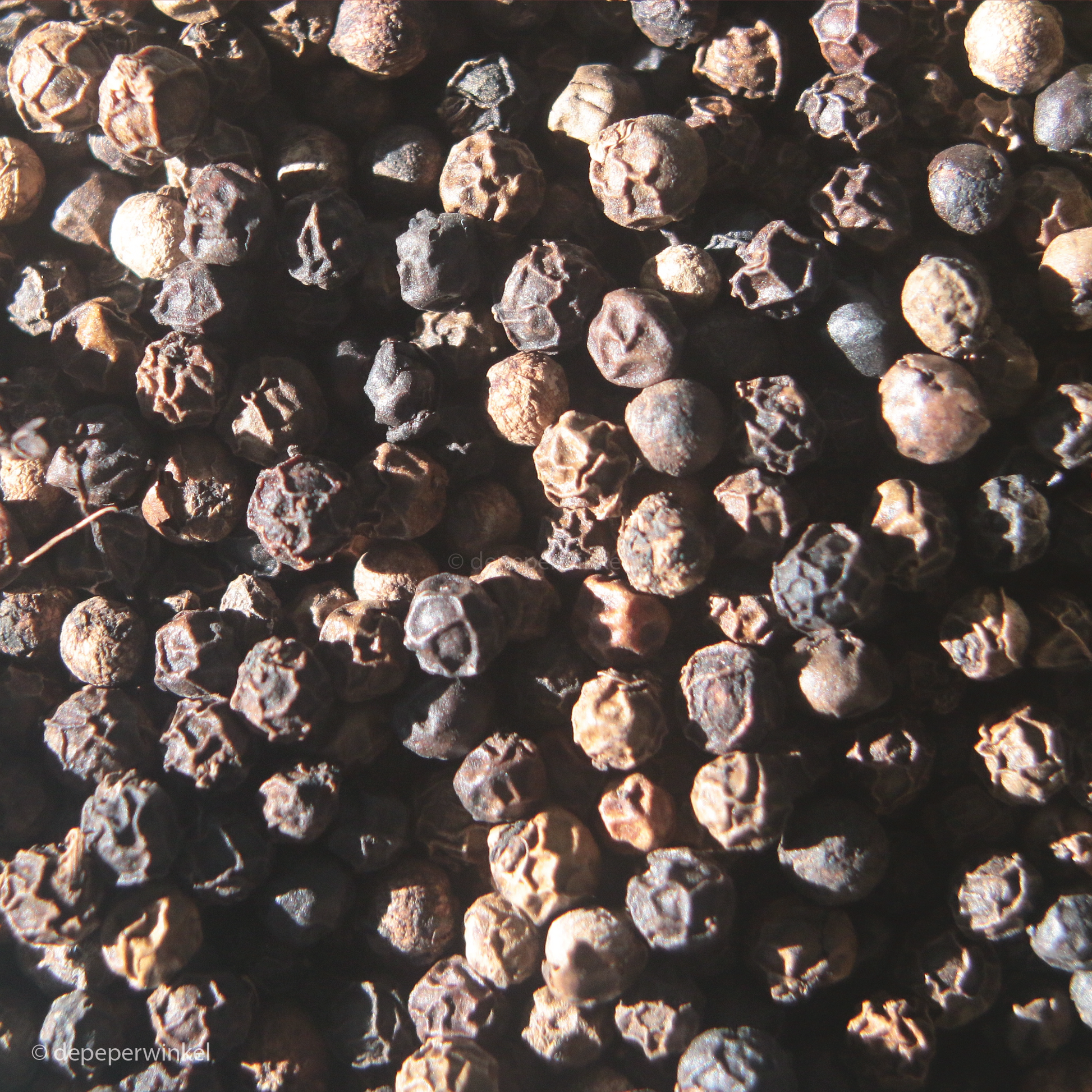depeperwinkel
Black Sarawak pepper GI
Black Sarawak pepper GI
In stock
Unable to load availability for pickup
Sarawak pepper is called the Queen of peppers. The cultivar Kuching, named after the capital of Sarawak, has long been the main pepper variety, but like many agricultural products, Sarawak pepper is also 'in development'.
It may sound critical to describe the Sarawak pepper as a pepper in development, because this traditional pepper can count on a loyal Asian audience. No less than three quarters of the harvest of Sarawak finds its way to Japan, Malaysia, South Korea and other Asian countries. For Japan, Sarawak pepper is the standard anyway, but if we are to believe the Malaysia Pepper Board, it is also the favorite pepper of Queen Elizabeth.
Pepper cultivation in Sarawak was established three centuries ago by settlers from China, a country without a pepper tradition.
If black pepper is the king of spices, many authors believe, Sarawak pepper is the queen. It is curious that Sarawak has the reputation of being rare and growing in the pristine environment of tropical forests. Sarawak does have an indigenous pepper, but that is the Piper sarmentosum, of which not the berries but the leaves are eaten. The reality is that the cultivation of pepper in Sarawak, although organized on a small scale, is extremely professional.
About 85% of the 67,000 households that earn their living from Sarawak pepper belong to the indigenous Ibans and Bidayuhs.
Sarawak pepper has Malaysian Geographical Indication (GI), which is overseen by MyIPO, which is under the Malaysian Ministry of Economic Affairs. Kuching is the classic Sarawak cultivar, emerging cultivars are 'Semongok perak' and 'Semongok emas'
The Sarawak vines are in a grid in the open field, often without shade, and are pruned several times a year to maximize the yield. No greater contrast is conceivable than with the cultivation of the premium peppers from Kerala, which, in addition to being grown in combination cultivation, are usually shaded and are not pruned.
The Sarawak peppers are harvested between March and August harvested. More than three quarters of the pepper berries are harvested unripe and processed into black pepper. The ripe berries are mainly processed into white pepper.
Why not organic?
The reason for this is quite simple. In order to meet the strict international standards, small family businesses have to make prohibitively large investments. Even though there is the possibility of micro-credit, for most family businesses this has not proven to be a feasible option. About ten years ago, the Board started to promote organic farming, but for the reasons mentioned above, it has still not gained much ground.
Developments
The government-stimulated increase in scale poses a serious threat to the survival of small-scale pepper. It is also under fire from palm oil and pineapple producers, who are not only relieving their hunger for space in the rainforest.
Smell and taste
Black Sarawak smells spicier than it tastes. In addition to the aroma of wet wood, you can recognize fruit (citrus) and cocoa in it.
Usage
Sarawak is used in Malaysian dishes such as Sarawak laksa - the Chinese influence - and curries and coarsely ground over your grilled steak. But also in stir-fries with light spring vegetables and in desserts of soft red fruit.
Features:
- 100% pepper berries from the Piper nigrum var kuching
- protected by the Malaysian BGA label (international: PGI)
- origin: Kuching region, Sarawak (Malaysia)
Assortment
- available in glass, stand-up pouch and test tube (10ml)
- larger quantities on request
Gift wrapping
- The jar is available in a tasteful gift packaging, consisting of a cube box filled with black tissue paper
- For an overview of our gift packaging, please refer to the gift packaging section
General advice
- grind your pepper shortly before use
- add the ground pepper to your preparation at the very last moment
Save:
- store your sarawak pepper in closed packaging
- preferably store in a dark, dry and cool place
- at least good until September 2027 (09-2027)
- This expiration date is an indication
Try?
Want to know how Sarawak tastes? You can also try a test tube, with enough pepper to fathom the flavor essence of this pepper.
Batch number
The batch number helps us trace which supply an item originates from. It is stated on the packing slip and the invoice
Share
